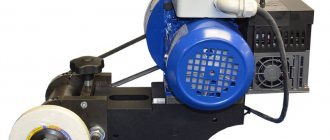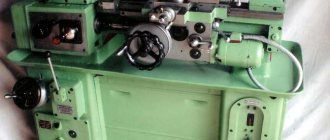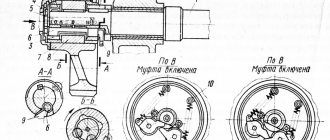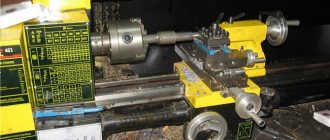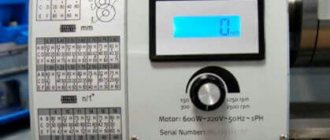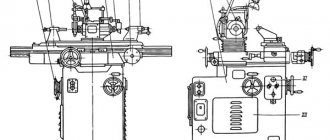1N4007 diodes belong to the 1NXXXX series devices. Such diodes use the American numbering system, since they are semiconductor devices. In addition, this standard is accepted throughout our modern world.
In model 1n4007, the markings read as follows. In the name of the 1N4007 diode, the first part "1N" is a unijunction semiconductor, where the number indicates that it has 1 junction, and the N indicates that it is a semiconductor diode. The remaining numbers are the numbering values of a particular diode.
According to its technical characteristics, such a diode can be compatible with any rectifier diode. All diodes that will belong to the 1N400X series are easily replaceable with just this version of diodes. The main application of such diodes is in embedded system projects.
1N4007 is a rectifier diode with a PN adapter. The ability of a diode to transmit electric current in only one direction with the ability to convert alternating current to direct current. As mentioned above, if we talk about the technical component, it can be replaced without problems or can replace other rectifier diodes related to the 1N400X series.
Currently, they can be used in any area of human activity, for example, flyback diodes, rectifiers used for general purposes as a constant power source, inverters or converters. And this is only a small part of all applications of this type of diodes.
Pinout 1N4007
The 1N4007 diode has only two contacts, which are the anode and cathode, respectively. Both current terminals are provided with opposite charges of different values, which have the names and corresponding charges indicated in the table below.
| Pinout | ||
| Charge No. | Charge name | Charge |
| 1 | Anode | +ve |
| 2 | Cathode | -ve |
How to connect a 1n4007 diode?
In order to carry out installation, you must use a special output circuit when using any position of the part. The soldering process occurs with low-temperature solder, where the melting point should be less than 210 degrees Celsius. In addition, the process itself should last about 10 seconds, otherwise the element will overheat.
It is worth considering that the datasheet 1n4007 indicates a maximum permissible temperature of about 260 degrees, but in practice you can understand that you should not take risks and achieve exactly this temperature. It is better to reduce the temperature than to spoil the part and then waste time soldering it back.
The technique used for its installation is surface mounting, which is used specifically for such a circuit. When soldering, you must use a special solder paste.
Appearance
1n4007, as well as all elements of this line, have a molded body made of non-flammable plastic. In order not to think about which side of this element is which, there is a colored stripe on the casing side of the cathode output.
Installation of such diodes is allowed both vertical and horizontal - it doesn’t matter. In general, these elements are very unpretentious, which, combined with their endurance and low cost, of course, makes them truly irreplaceable.
In appearance, they are no different from other diodes, and therefore it is necessary to pay attention to what markings are applied to the body
It is very important that such diodes are very difficult to overheat when soldering, since it has long contact legs (about 2.5 cm), which, as is known, work as a heatsink. The 1n4007 diode itself can withstand direct heating up to 250 degrees for 10 seconds
The 1n4007 diode itself can withstand direct heating up to 250 degrees for 10 seconds
It is very important that such diodes are very difficult to overheat when soldering, since it has long contact legs (about 2.5 cm), which, as is known, work as a heatsink. The 1n4007 diode itself can withstand direct heating up to 250 degrees for 10 seconds
To summarize, we can say with confidence that the diodes of this line, as well as their analogues, are a very convenient solution when assembling circuits for various power devices for both 220 and 380 volts.
In almost any imported electronic devices you can find 1n400x diodes. Considering the popularity of this series, it makes sense to familiarize yourself in detail with the description of its top element. We are talking about the 1N4007 diode. Let's look at its main technical characteristics, purpose, marking and the possibility of replacement with domestic and foreign analogues.
The datasheet for this element indicates that it is a rectifying low-power silicon diode, which is produced in a housing made of non-flammable plastic (type D0-41). The design, pinout and typical dimensions of the device are given below.
Permissible deviations in dimensions are given in the table:
| Designations in the figure | Millimeters | Inches | ||
| min | Max | min | max | |
| A | 4,10 | 5,20 | 0,161 | 0,205 |
| IN | 2,00 | 2,70 | 0,079 | 0,106 |
| WITH | 0,71 | 0,86 | 0,028 | 0,034 |
| D | 25,40 | — | 1,000 | — |
| E | — | 1.27 | — | 0.05 |
These semiconductors are also available in a standard SMD package (type D0-214), which makes it possible to use them in miniature electronic devices.
Typical dimensions in millimeters for SMD elements are given below.
The main purpose of the device is to convert alternating voltage with an operating frequency of no more than 70 Hz. This type of silicon semiconductor elements is used in circuits and power supplies of various low and medium power electronic devices.
Specifications
As you can imagine, 1N4007 is one of the most popular diodes used today. It is used in many chargers for modern phone devices, even those that cost about a dollar and do not have stabilizers or filters to reduce interference. Devices cannot do without 1N4007.
There are exactly four of them in one adapter, on which a diode bridge is assembled using 1n4007, which, in fact, converts alternating current into direct current, transferring the current through itself in only one direction, completely cutting off one of the existing polarities of the entire voltage.
Diode sizes
At the same time, in cheap similar chargers, some manufacturers save these diodes by using 1 instead of 4, replacing them with half-wave rectification. It is strongly recommended to use the first option, with a total voltage of more than 1 Watt. (How to find out how many watts? Use a wattmeter.)
Normal diodes are not able to resist a reverse current avalanche, since they are made specifically to withstand the flow of energy flowing through this element. The cathode output is indicated on the body part with a special ring.
Below you can see the electrical and thermal characteristics of the 1n4007.
Electrical characteristics
The electrical characteristics include parameters such as forward voltage, as well as reverse current, total capacitance, maximum reverse current with a certain load, as well as the average value of the rectifying current and peak repeating reverse voltage.
- Forward voltage (VF) at 1.0A - 1.1 V.
- Reverse current at 25°C - 5 μA.
- The total capacitance at 1.0 MHz is 15 pF.
- Maximum full load reverse current at 75 °C is 30 μA.
- The average rectified forward current (IF (AV)) is 1A.
- Peak repetitive reverse voltage 1n4007 1a 1000v.
The diode has a high overload capacity, as well as a low voltage drop, which can have a peak value of up to 1.1 V. The maximum pulse current has a duration of 8.2 seconds, reaching a voltage of 30A.
As already indicated above, the typical electrical capacitance of the junction should not exceed about 15 pF. This is all taken into account when using a frequency of 1 MHz, and a constant voltage of 4V. Speaking in theory, the speed of the diode is unacceptable, so they are not in demand for high-frequency purposes, since this is not regulated.
The leakage current will not exceed 5 μA, but if a progressive increase in the ambient temperature is noticed, this figure will also increase. For example, at temperatures above 75 degrees, you can be sure that it will increase to 50 µA. As a result, performance indicators deteriorate, which is why for effective use you must use a standard 30% margin of the parameters. In addition, cooling should be properly organized, which is carried out using a non-conducting thermal compound.
The operating frequency of power using high alternating voltage is 60Hz. To get acquainted with the operating limits, you should look at the datasheet, where various operating features are indicated.
Thermal characteristics of 1N4007
Thermal characteristics include power dissipation as well as resistivity as the main ones. Both the above characteristics have the following meanings as given below.
- Thermal resistance - 50 °C/W.
- Power dissipation - 3 W.
Characteristics
- The material of manufacture is silicon.
- Transition. Manufactured using diffuse technology.
- Low forward voltage.
- Large pulse current in the forward direction.
- Soldering. Solders with a melting point of up to 275 °C are used, the operation time is no more than 10 seconds.
- Housing – DO-41 (DO-204AL), smd DO-214AC
- The material of manufacture is epoxy resin.
- Fire resistance of the housing - UL 94 V-0.
- Conclusions. Prepared for soldering and meeting the requirements of international standards J-STD-002 and JESD 22-B10.
- Cathode. Indicated by a colored stripe on the body.
Datasheet, datasheet.
If you are looking for a Datasheet, a datasheet for this type of diode, then you need to go to the manufacturer’s website to find 1n4007 specifications in Russian or follow the following link.
In datasheet 1n4007, each user will be able to find the most accurate characteristics, as well as specifications and graphs that can reflect the full performance of the microcircuit.
In addition to all this, it also describes some of the typical schemes, as well as uses and other most detailed descriptions, including settings for any popular needs. And also there you can read some applied recommendations on the use of diodes.
How to check 1N4007?
If we talk about checking diodes, then this will not be a particular problem for a knowledgeable person, since the check occurs as in ordinary general-purpose diodes. In order to do this, you should acquire (if you don’t have) special instruments: a multimeter or an ohmmeter.
Step-by-step algorithm for testing 1N4007 diodes
- The first thing to do is turn on the device and switch it to the special “Dialing” mode exactly as indicated in the figure below. If you are using a different model of multimeter, then refer to the operating instructions for your measuring device.
- We take the probes and connect them to the part that you plan to measure. Red should be connected to the anode, and black to the cathode. It is this polarity that is used by the diode through which current will pass so that you can see all the information that will be displayed on the device display. If you have information that indicates too much resistance, you can be sure that an internal open has occurred.
- Now you should change the polarity, and evaluate the value shown on the device display. After changing the polarity, the diode is not able to pass voltage through itself, so it must be infinitely large. If the readings are completely different, then this indicates only one thing - a breakdown in the transition.
This will be quite enough for you to verify the functionality of the semiconductors of a given diode of this series.
Installation 1N-4007
1n5819 diode: characteristics
The part is installed on the board in the same way as any other two-pin elements. The algorithm of actions is as follows:
- Using special needles and a soldering iron, the mounting holes for the part are cleaned of old solder. It is even more convenient to use a tin pump.
- The diode leads are inserted into the holes according to polarity. It is indicated both on the board and on the part itself.
- The diode is pressed closely to the board. On the other side, the leads are bent. This is necessary to secure the part before soldering.
- The leads are soldered to the contact pads. Excess sections are shortened to the minimum length.
Alternative 1N4007
It happens that you don’t have a specific diode at hand to replace it in case of a breakdown, that’s when analogs that are available from both domestic and foreign manufacturers can come to the rescue. Below you can find out how to replace 1n4007.
Domestic analogues
One of the most attractive options for replacing such a diode will be models from the KD 258D series, which have incredible characteristics, and some have exactly the same indicators. And some of the parameters exceed those of the diode model 1N4007.
Sometimes other diodes that have partially lower parameters are used as a replacement: D226, KD208-209, KD243 and KD105. Before installing them, you should find out whether this diode option is compatible for your device, and also compare the main characteristics.
Foreign analogues
If you look at foreign models, then there are also full-fledged replacement options. For the most correct example, we present you with several options similar to the 1N4007 model.
- HEPR0056RT diode, which is produced by Motorola.
- Thompson is considered among the best companies, which have two easily replaceable brands of diodes: BYW27-1000, as well as BY156.
- Philips offers BYW43.
- Three incredibly similar components (10D4, 1N2070, 1N3549) developed by Diotek.
It is precisely these analogues from abroad that you can use to adequately replace this type of diode.
Advantages
4007 are famous for their prevalence and versatility. Because of this, people are very familiar with these elements and often prefer them in their homemade projects and for repairs.
However, the main advantage is the price. At the end of 2022 they cost only 4 cents/piece. In a well-known Chinese online store it’s even less – 58 cents/100 pieces. Despite this price, the diodes in question have decent parameters of 1000 V / 1 A, which is beyond the capabilities of many competitors who are tens of times more expensive.

